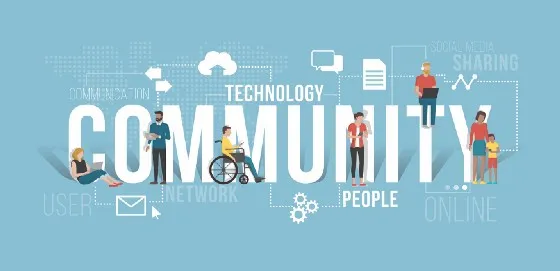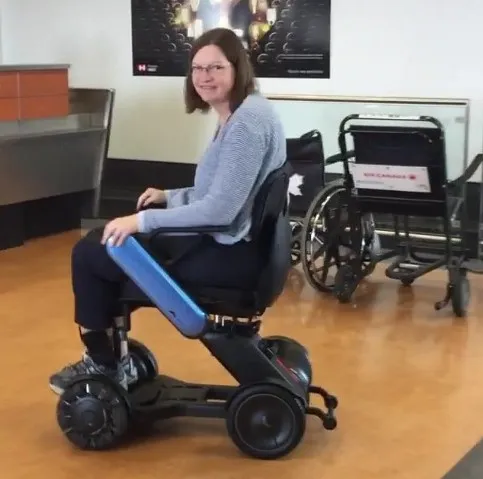How Tech has Changed Disability

Occasionally, when I find myself in one of those “dammit why is my life so hard” holes and am trying to struggle my way out of it, I think about how if I had lived only 50 or 100 years earlier how much harder my life would have been (if I even would have been alive after all). This is just looking at the perspective of someone with a disability, I suspect if I added in gender or any of my other intersectional identities it might be too overwhelming to think about.
Pharmaceuticals
One hundred years ago, Type 1 Diabetes was a death sentence. Early onset osteoporosis and arthritis were painful, crippling, and life-shortening. Now with pharmaceuticals, I get to be alive (thanks to insulin), in a manageable amount of pain, and reduce joint damage and fractures from bisphosphonates and biologics. This is not intended to be a pro-pharma commentary, just that my tombstone future from 100 years ago is now merely an expensive and unpleasant nuisance with human equivalent insulin, a pump to administer it, and a continuous glucose monitoring system to watch for untoward high or low instances of blood sugar problems. My Uncle Sandy died from complications of type 1 diabetes at age 49 before there was even the ability to test blood sugar levels at home. I will not.
Assistive Technology
Up until the 50s, the only way to produce Braille was slowly, painstakingly, and manually. Now the combination of the following three types of assistive technology:
Braille printers
Refreshable Braille displays, and
Screen readers
have made manual Braille production obsolete, and even automated Braille production significantly less relied upon. The downside of the popularity of screen readers is that the Braille literacy rate has plummeted, labeled a “crisis” by the National Federation of the Blind. Fewer than 10 percent of the 1.3 million people who are legally blind in the United States, are Braille readers. Further, a mere 10 percent of blind children are learning Braille. The inability to read Braille leaves most legally blind individuals functionally illiterate, which harms their chances of obtaining employment in adulthood.
Digital and Bluetooth Hearing Technology
It’s only been about 20 years that fully digital hearing aid technology has been commercially available. At the time they came out, my daughter had a progressive hearing loss that had gotten to the point where she could no longer understand her father’s side of the family when they were speaking Chinese. It was isolating and quite hard for a then nine-year-old to understand. In the fall of her 4th grade, she began to identify as “primarily Caucasian, secondarily Chinese” on her school forms. Previously she identified as the opposite, as did her older sister, who could still speak and understand Mandarin.
With her first pair of digital hearing aids, she was able to reconnect with the Chinese-speaking side of her family. It was so important to her for me to buy them, that she offered me her entire piggy bank for which she had been saving for a Nintendo Pokemon video game. Twelve years later, she got her first pair of Bluetooth-enabled hearing aids, which enabled her to understand a telephone conversation again. Her Bluetooth-enabled FM system in college meant she could hear and understand her professors, even in a crowded auditorium with terrible acoustics. She will be starting a three-year Ph.D. in audiology program next month (proud mom moment).
Never underestimate the impact of a good set of hearing devices to someone who has a substantial hearing loss and wants to hear.
Genetic Testing
Genetic testing can provide a lot of answers about congenital medical conditions. For example, when I didn’t wake up normally after one of my childhood surgeries, the doctors suspected that I had a rare genetic disorder. However, the gene had not yet been identified and there was no way to confirm their suspicions other than a painful muscle biopsy. Fast forward 40 years and not only have they discovered the gene, this mutation is one of the things they automatically test for in 23andme Instead of a muscle biopsy you can spit in the tube and be done.
In the not-too-distant future, it could be possible that prescriptions would always be individualized to the patient’s genetics. Before that can happen though, the laws pertaining to genetic data privacy need to be improved in the US. I am fortunate that I live in California, a state that has fairly strict laws about the privacy of data that results from genetic testing. Most of the other states don’t have the same level of protection. Any genetic condition uncovered by testing could be ascribed as a pre-existing condition. If pre-existing provisions get stripped from health insurance laws, doing genetic testing would give insurance companies the right to discriminate against people based on their results. Also, genetic testing has resulted in a decrease in the number of children born with disabilities through selective termination. From the perspective of someone with a disability, genetic testing is definitely a two-edged sword.
Prosthetics
Prosthetics have gone from pirate “peg legs” several hundred years ago to carbon fibre works of art that allow users to run competitively against people with two legs. When an arm or other extremity is amputated or never existed, a prosthetic replacement can play an important role. For many people, prosthetics improve mobility and the ability to manage daily activities, as well as provide the means to stay independent. 3D printing techniques are making prosthetics easier and cheaper to come by. However, people don’t always get insurance coverage for the prosthetic they want. A “scaling” system called K-levels gives every insurance company that follows Medicare guidelines the ability to limit what prosthetics they provide members. The medical providers score the patients and the score is supposed to be indicative of how much the patient might gain from a prosthetic. However, something unrelated to the missing limb such as smoking, type 2 diabetes, or addiction might reduce a K-level score and result in the patient receiving a less modern prosthetic.

Wheelchairs
Though the first wheelchair came to be in the mid-1600s, it’s only been about 150 years that patients have been able to push themselves. Originally called an “invalid’s chair”, it has come a long way in both form and language. Now wheelchairs can be collapsed, can run for miles, charge quickly, and my new one can even be driven by a joystick or phone. My new wheelchair absorbs bumps and can go up a curb and easily go outside into a garden or on grass. I can go down the gravel path at my house and feed my husband’s horses now. It also does zero-point turns and breaks apart into three pieces to fit in my Prius trunk! I can’t tell you how amazing this is. It’s no wonder that it was named CES Innovation Product of the Year in January 2018.
Conclusion
The problem with all cutting-edge technology is that it is EXPENSIVE and not available universally.
As I have previously ranted about, the rate of unemployment for people with disabilities is at an all-time low — only 250% more than the rate of unemployment for people without disabilities. In the US, much of what I have listed above is out of the price range of many people with disabilities, especially if they are forced to stay out of the workplace to keep Medicaid insurance to cover their medical needs.
When an insurance company will only cover a $150 wheelchair, but you want the $4000 one, most people end up with the low-tech version. Many people with disabilities turn to GoFundMe to crowdsource funds for more advanced mobility aids. That is a sad place for our society to be, where people with disabilities have to tell a sad story and beg for funding for devices that everyone should automatically receive.
Add a comment: